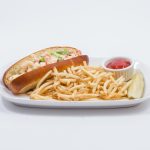In the realm of cooking, garlic stands as a cornerstone ingredient, infusing dishes with its unmistakable aroma and depth of flavor. Yet, even the most experienced culinary enthusiasts encounter the age-old conundrum: “How many tablespoons is 4 cloves of garlic?” This question, simple as it may seem, is a gateway to exploring the art of precision and nuance in cooking. As we embark on this detailed exploration, we leverage our extensive culinary expertise to bridge the gap between raw ingredients and their measurements, providing you with the knowledge to elevate your cooking game.
This article isn’t just a straightforward conversion guide; it’s a culinary compass that navigates through the varied sizes of garlic cloves, the intricacies of measurement, and the impact of precision on the flavor and outcome of your dishes. By diving into this discussion, we not only aim to answer a common kitchen query but also to enrich your understanding of ingredient preparation and its pivotal role in successful cooking.
Prepare to have your curiosity ignited and your culinary skills honed as we delve into the specifics of converting garlic cloves to tablespoons. Whether you’re finessing a family recipe or experimenting with a new dish, the insights provided here will ensure that you wield your garlic with confidence and accuracy. So, sharpen your knives and your minds, for you’re about to embark on a flavorful journey that promises to enhance your cooking repertoire and demystify one of the kitchen’s enduring questions.
Why Precise Garlic Measurement Matters

Precision matters when cooking with garlic. Too little, and a dish lacks the needed zing. Too much overpowers other flavors. Properly balancing garlic ensures dishes have the intended taste. Understanding garlic conversions grants control over flavor outcomes.
Garlic Basics – Cloves and Volume
Garlic bulbs contain individual cloves encased in paper-like skin. Standard garlic cloves range from 1/2 to 1 teaspoon in volume. Most average around 3/4 teaspoon. 4 cloves of garlic is equivalent to 2 teaspoons of minced garlic. However, clove sizes vary, so these conversions offer approximations.
For ultimate precision, weigh garlic on a kitchen scale. But for most cooking, the 3 to 1 ratio works fine. Keep reading for details on dealing with different clove sizes when measuring garlic.
Garlic and Health
Beyond adding flavor, garlic offers health benefits. It contains antioxidants that combat cell damage and boost heart health. Raw garlic provides the most nutrients but cooked still retains benefits. So savor garlic for its flavor and health virtues!
Fresh Garlic vs Processed
Fresh garlic has a robust, pungent bite. It gives bold, direct flavor. Processed garlic comes minced, powdered, or liquefied. Although convenient, processed forms offer muted, one-dimensional taste.
Processing also lowers nutritional value – cutting antioxidant levels. For full flavor and health benefits, choose fresh garlic whenever possible. Use processed garlic when time demands shortcuts.
Impact of Garlic Varieties
Not all garlic is equal. Over 100 varieties exist, categorized into softneck and hardneck types. Softneck garlic, the most common, has smaller cloves and milder flavor. Hardneck garlic has larger cloves and stronger, spicier taste.
Larger cloves translate to more teaspoons per clove. For hardneck garlic, estimate 1 teaspoon per average clove. Adjust conversions accordingly. When writing recipes, specify garlic type or use weight measures for accuracy.
Fresh Garlic Substitutes
When fresh garlic isn’t on hand, substitute with powder, granules, or paste:
- 1 small clove = 1/4 teaspoon powder
- 1 medium clove = 1/2 teaspoon powder
- 1 large clove = 3/4 teaspoon powder
For paste, use equal amounts to fresh garlic. Add these products slowly, tasting as you go since their flavor concentrates during processing.
Selecting Garlic – What to Look For
Choose garlic bulbs with tight, papery skins and no soft or missing cloves. Softness indicates age. Avoid sprouting bulbs – a sign of excessive dryness. The garlic shouldn’t feel lightweight, which signals dehydration. Select heavy, robust bulbs for optimal freshness and flavor.
Storing Garlic
Store bulbs in a cool, dark place with good ventilation. Don’t refrigerate or enclose in plastic. Refrigeration encourages spoilage. Good air flow prevents mold. Stored properly, garlic lasts up to 3-5 months. Watch for sprouting and softness – signs it’s past prime.
The Global Kitchen garlic built
Throughout history, garlic appears in cuisines worldwide. It flavors stir-fries, curries, pesto, aioli, and much more. Culturally, it symbolizes health and warding off evil. Clearly, this humble ingredient profoundly impacts cuisine and culture. Honor its legacy by using garlic knowledgeably and skillfully.
Coping with Garlic Breath
Garlic breath bothers some after eating. To minimize, avoid raw garlic on an empty stomach. Eat yogurt or cheese, supposed to neutralize odors. Parsley, mint, or lemon water also help counteract breath issues. Or embrace the scent as a sign you’re enjoying garlic’s health and flavor benefits!
Prepping Garlic Efficiently
Mincing garlic by hand takes time. Instead, use tools to simplify prep:
- Garlic press – Squeezes pulp from peeled cloves
- Garlic peeler – Removes skin fast
- Garlic crusher – Crushes cloves into small bits
- Garlic slicer – Slices cloves evenly and quickly
Investing in quality garlic gadgets saves prep time when recipes call for multiple cloves. Peeled garlic also now comes pre-minced in jars – a real time-saver.
The Takeaway – Master Garlic Measurement
Understanding garlic conversions grants you finesse and liberation in cooking. Estimate three small-medium cloves per tablespoon. Adjust for large cloves or varieties. Weigh for ultimate precision. Savor garlic’s versatility, health virtues and rich place in cuisine history. Finally, prep garlic deftly and minimize breath issues. Then enjoy garlic’s gifts fully as both flavor enhancer and nutritional powerhouse. What dishes will you make next with your newfound garlic mastery?
Susan Muskat is a professional chef with over 25 years of experience in the culinary industry. After working in some of the most prestigious restaurants in the world, she opened her own restaurant, Moose and Sadie’s, which quickly became a local favorite. Susan is also the author of a blog all about recipes, guidelines, cooking tips, and knowledge from professional chefs. She loves nothing more than sharing her passion for food with others.








